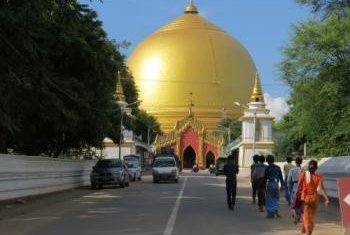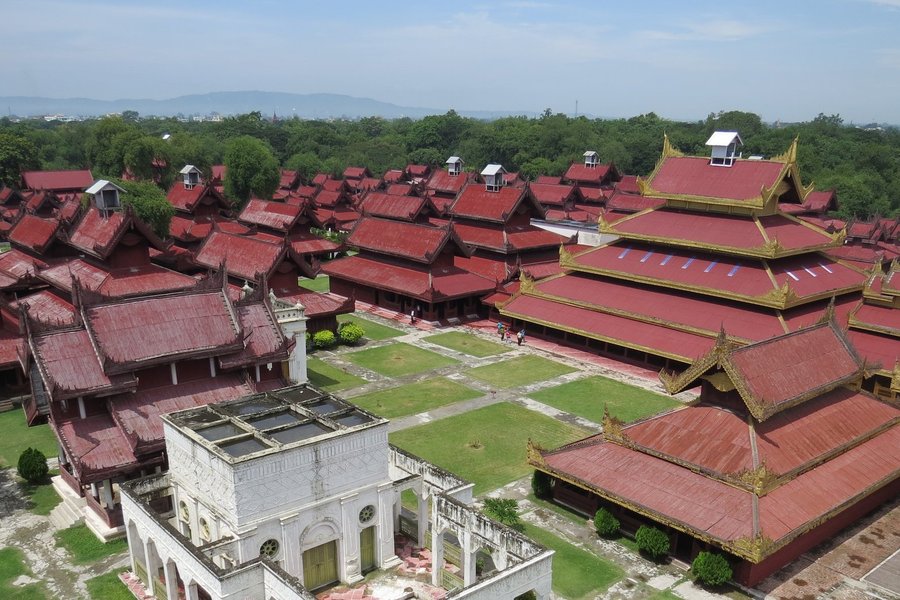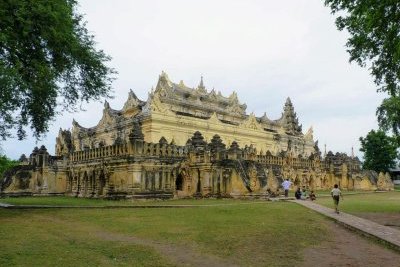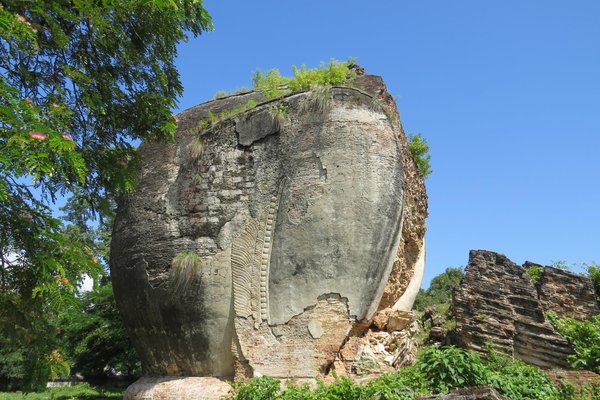Myanmar
Ancient cities of Upper Myanmar
Site Info
Official Information
- Full Name
- Ancient cities of Upper Myanmar : Innwa, Amarapura, Sagaing, Mingun, Mandalay (ID: 823)
- Country
- Myanmar
- Status
-
On tentative list 1996
Site history
History of Ancient cities of Upper Myanmar
- 1996: Added to Tentative List
- Added to tentative list
- Type
- Cultural
- Criteria
Links
- UNESCO
- whc.unesco.org
All Links
UNESCO.org
- whc.unesco.org — whc.unesco.org
News Article
- April 13, 2025 artnews.com — Monumental Ruins Emerge Following Massive Myanmar Earthquake
- April 6, 2025 nationalgeographic.com — Centuries of history and culture reduced to rubble after Myanmar earthquake
Community Information
- Community Category
- Archaeological site: South (East) Asian
- Urban landscape: Asian
Travel Information
Recent Connections
News
- artnews.com 04/13/2025
- Monumental Ruins Emerge Following …
- nationalgeographic.com 04/06/2025
- Centuries of history and culture r…
Recent Visitors
Visitors of Ancient cities of Upper Myanmar
- AC
- Alejandro Lau
- Alexander Parsons
- Alex Baranda
- Alikander99
- Ali Zingstra
- A. Mehmet Haksever
- Ammon Watkins
- Astraftis
- Bernard Joseph Esposo Guerrero
- Bram de Bruin
- Cheryl
- Clyde
- Csaba Nováczky
- Dimitar Krastev
- edstar500
- Els Slots
- Eric Lurio
- Errol Neo
- Francky D'Hoop
- George Gdanski
- Hammeel
- Harry Mitsidis
- Ingrid
- Jacob Otten
- Jana and Matt
- Javier Coro
- Jean Lecaillon
- Jeffrey Chai
- Joel on the Road
- jonathanfr
- Jon Opol
- Luboang
- Luke LOU
- MarcoB_0
- Marcobrey
- Martin
- Michael Ayers
- Michael Turtle
- MMM
- Monica Tasciotti
- PabloNorte
- Patrik
- Patrik_globe
- Paul Schofield
- Pieter Dijkshoorn
- Riccardo Quaranta
- Roman Bruehwiler
- Sergio Arjona
- Shandos Cleaver
- Shannon O'Donnell
- Solivagant
- Ssong.x
- Stanislaw Warwas
- SteveD92
- Szabolcs Mosonyi
- Szucs Tamas
- Tevity
- Thomas Buechler
- Tim Allen
- Timothy C Easton
- Truls Brekke
- Vanessa Buechler
- Van Hung
- Vernon Prieto
- Zizmondka
Community Reviews
Show full reviews
The impressively titled TWHS Ancient cities of Upper Myanmar comprises the former royal residences of Innwa, Amarapura, Sagaing, Mingun and Mandalay. They're located near Mandalay, Myanmar’s second city. Except for Mingun, the cities served also as state capitals for periods between the 14th and 19th century after the demise of Bagan. The Burmese seem to be especially fond of switching their capitals, using over 20 of them since the year 849. The current one (since 2005) is the greenfield site of Naypyidaw.
I stayed in Mandalay for 4 nights, and - though admittedly I edged out a day for visiting the Pyu City of Halin - that was even not enough to see these 'Ancient cities' properly. I spent one day cycling around Mandalay proper. It’s a bit of a mystery what would be included in a future nomination here. The Royal Palace is the major landmark of the city, but it is (a) a complete reconstruction and (b) used as a military base. The army probably is still convinced of the strategic value of the fortress walls and moat surrounding this zone. The outer wall has a huge sign saying ‘The Tatmadaw Shall Never Betray the National Cause’, the only time I came across such a display during my two-week stay in Myanmar.
Although it’s a sensitive area, foreign visitors are welcome. I encountered a soldier with reasonable English posted at the only entrance gate, ordering tourists off their bikes in the most friendly way. The palace itself is …
Keep reading 0 comments
I agree with Paul that this tentative entry doesn't make sense as 1 WHS. However, I feel Innwa could easily be managed as a single WHS and is really a gem close to Mandalay. Sagaing has a special place in my heart for the countless monasteries and nunneries.
Keep reading 0 comments
Following the fall of Bagan in the 13th century through to complete take over by the British in 1885, numerous kingdoms came and went across the area of modern day Myanmar – occasionally one was strong enough to control most of the country but often power was limited to a smaller area. But there was always some form of political entity based on the central Irrawady plain and the rulers of these built a number of capitals clustered in and around modern day Mandalay (some of them were used more than once and some kingdoms moved their capitals from one to the other!). 5 of these (including Mandalay itself) have been grouped together in this single potential “nomination” straddling all those years.
We visited the 4 non-Mandalay sites in a single day (with car), though perhaps doing it across 2 days is more normal but I don’t feel we missed a lot by crowding it together! I will describe them in the order in which we did them –
a. Amarapura. The last-but-one capital, founded in 1783 by King Bodawpaya. There was a gap in 1821 when the capital was briefly moved back to Ava and then finally the founder’s grandson, King Mindun, decided in 1857 to up-sticks and move everything to a new capital at nearby Mandalay (the area today is a southern suburb of that city) and frankly there is little to see. We were told that part of the moat and the location of …
Keep reading 0 comments
